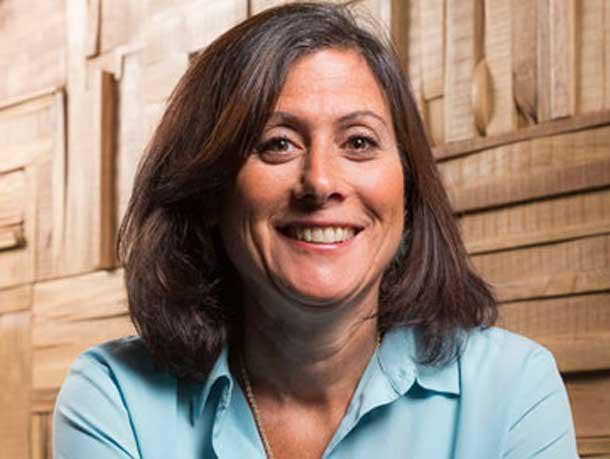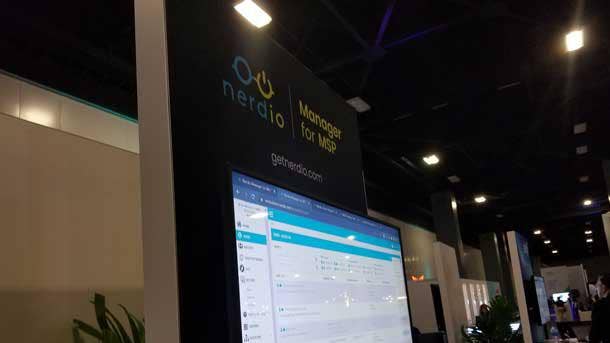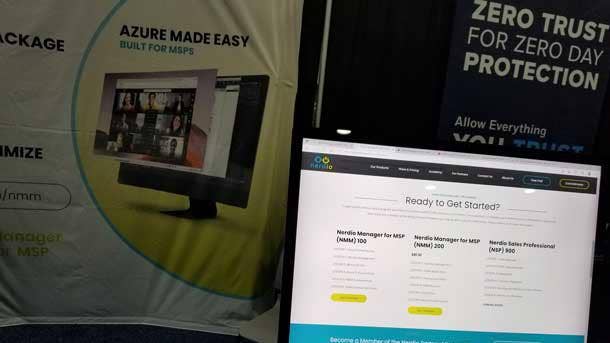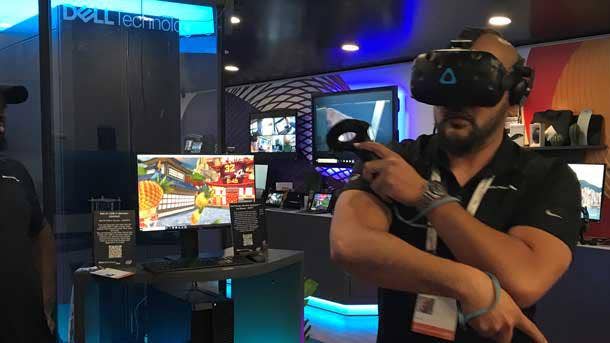Former Microsoft Channel Chief Gavriella Schuster: ‘No Better Time To Be An MSP’
‘I wish him luck in his new role,’ former Microsoft channel chief Gavriella Schuster says of her successor, Rodney Clark, who left the tech giant for another job.

Gavriella Schuster, Microsoft’s former channel chief, wished her successor Rodney Clark good luck as he leaves the channel chief position and shared advice for Microsoft partners, including a suggestion that they look at new independent software vendor partnerships that can further their practices.
CRN caught up with Schuster about eight months after she left Microsoft, during which she has continued as an influential figure in the tech giant’s ecosystem and in the areas of diversity and inclusion.
Schuster – who spent more than 25 years with Microsoft and left with the formal title of corporate vice president over the One Commercial Partner team – recently joined the boards of Microsoft partners Nerdio and Open Systems while also continuing her work in diversity with groups such as the Women Business Collaborative and startups like Included.ai.
[RELATED: Microsoft Channel Chief Rodney Clark Lands At Johnson Controls]
Schuster told CRN in an interview that although Microsoft partners and the channel overall continue to grapple with changes in technology and business, their importance to customers has never been greater.
“There is no better time to be an MSP,” Schuster said. “It’s something that we – when I was the global channel chief at Microsoft – had been encouraging partners to move to for the last five years. Which is, really, think about cloud MSP and help customers to understand that they can outsource all of their technology needs to you, that you can provide that ongoing value and subscription support.”
Where Does Former Microsoft Channel Chief Gavriella Schuster Work Now?
Schuster spoke with CRN about her current board work, the virtual desktop market and advice to partners on exploring possibilities with new ISV partners, among other subjects.
In April, Schuster joined the board of directors of Nerdio, a Chicago-based Microsoft independent software vendor (ISV) partner that markets a packaged Azure application to managed service providers (MSPs) building practices in Azure, Azure Virtual Desktop and Windows 365.
In the fall, Nerdio announced that it had passed 1 million users under management across its manager products, reflecting the popularity of Azure Virtual Desktop. In February, Nerdio announced that it had reached 2 million users under management.
She’s also about seven months into her role as a board member of Open Systems – a managed security services provider (MSSP) that has offices in Switzerland and Redwood City, Calif. The Microsoft partner is also a security MSSP of the year finalist as part of Microsoft’s Security Excellence Awards.
And Schuster has also been busy as an advisor to diversity- and inclusion-focused startup Included.ai. Earlier this month, Included raised $3.5 million in seed funding and announced more than five times percent growth in annual recurring revenue year to date, according to a statement.
When asked about her successor, outgoing Microsoft channel chief Rodney Clark, and his move to Johnson Controls, she wished him luck and shared advice for the next channel chief.
“I wish him luck in his new role,” Schuster said. “It is a pity he wasn’t able to stay in this last role longer, as I think there is a lot of unfinished business and I would have liked to see him see it through. I hope the new leader understands the value and breadth of Microsoft’s ecosystem and takes the time to meet the thousands of committed and loyal partners that have built up the business over the last several decades.”
Schuster also shared words of encouragement for Microsoft partners navigating a number of changes to the tech giant’s partner program.
The most controversial recent changes to the Microsoft partner program have been a 20 percent premium on month-to-month commitments to popular Microsoft software packages – including Microsoft 365 – and a new partner capability score that determines who qualifies as a Microsoft “solutions partner.”
“The key thing is to take what’s valuable to you as an organization and decide – what’s the business I’m in and how much value does this add to me? Is it pushing me to do more for my customer in a way that I hadn’t really thought about and to see more upside and opportunity? Or is this just a lot of overhead,” Schuster said. “And to really make the decision for themselves about – am I good with where my business is, or what are the other opportunities I may be not seeing right now?”
Schuster herself navigated Microsoft’s channel program through controversial decisions, including the proposed halting of product internal use rights for partners. Microsoft ultimately backed down on the proposal.
Here’s what Schuster had to say in her interview with CRN.

What got you interested in Nerdio?
I’ve known Joseph (Landes, Nerdio chief revenue officer) for a very long time. And then, when he joined Nerdio, he and I kept in touch. And then I got very interested in what Nerdio was doing while I was Microsoft’s global channel chief because I used to run – back during the Vista, 7 to 8 time period – I used to run our Windows client business.
And so I was very interested in what Nerdio was doing to make the virtual desktops really work well and work much more easily than they have before. And so I’ve really seen Nerdio grow from a small startup into one of Microsoft’s leading ISVs (independent software vendors) in the virtual desktop space.
And then recently, in February, I delivered a DEI (diversity, equity and inclusion) workshop at NerdioCon 2022 in Cancun to help the partners grow their business through DEI.
Are we seeing more ISVs in the Microsoft ecosystem dedicated to helping partners further their Microsoft practices – as Nerdio can do with Azure Virtual Desktop?
That sort of thing has always happened. It’s come in different flavors and shapes. There is a set of ISVs that are dedicated to help(ing) telcos take advantage of the Microsoft practice.
The key thing is that MSPs (managed service providers) are really the emerging, primary go-to-market in the channel. The ability to have that ongoing relationship with a customer, providing them value, helping them manage all of their technology needs.
And the challenge is that, for that space, there isn’t a lot of great tooling. And so it really does open up an opportunity to provide them much better insight and tooling so that they can provide value to the customer.
It’s taken many shapes over the years. But I think that this time, MSP is really the place where you have the most upside and opportunity to really shape the market.

Would you say this is a great time for Nerdio and these MSP-focused Microsoft ISVs?
Absolutely. There’s no better time. You look at all of the customers that have realized they needed to accommodate this remote work and hybrid work. And then the opportunity that presents for MSPs, like I said – back in the days when I was in Windows client – the options were, go with a VDI (virtual desktop infrastructure) type of solution or Citrix type of solution. And those are cumbersome and costly.
Using Azure Virtual Desktops, using Nerdio to manage that, doesn’t require a big CapEx (capital expenditure) investment – which is huge for an MSP – and just requires them to have some expertise in the way the systems operate and work. And then you layer on tools like Nerdio that just really simplifies the entire thing and gives you knobs to move as opposed to having to get under the covers and really integrate things and really build them. (It) makes it makes it a really easy business to get into with high, high value out to the customer.
Would you say there is no better time to be an MSP?
There is no better time to be an MSP. It’s something that we – when I was the global channel chief at Microsoft – had been encouraging partners to move to for the last five years.
Which is, really, think about cloud MSP and help customers to understand that they can outsource all of their technology needs to you, that you can provide that ongoing value and subscription support.
It’s essentially like being a hoster again without that CapEx investment. And every customer needs that – and especially if the partners can then move into some of the business solutions as well.

What cutting edge technology – such as virtual reality, 5G, internet of things – has your attention lately?
(VR) is very transformational. It changes the way businesses work. It can open up new opportunities for what business they’re in and how to engage with their customers in an ongoing way.
Instead of having to go see somebody like once a year or twice a year you can even stage some of these conversations to have on an ongoing basis. But it’s all of that stuff coming together. It’s conversational AI (artificial intelligence) overlaying with the cloud technologies, overlaid with the VR technologies – it has to all come together to create that real experience.
What are some of your goals as a new Nerdio board member?
It’s all about looking at helping them figure out how do they do some global expansion.
They have a really solid footprint in the U.S. They have sales presence in the U.K. and Australia. It is really thinking about how they might take their practices into larger markets.
And then thinking about how do they increase some of those partnerships that they have. Go deeper in partnership with not just Microsoft but other organizations like Intel.
I know Nerdio is currently running a training camp with Microsoft and Intel where they’re putting on Azure accelerator days across North America.
And it’s free for MSP staff to learn how to use Nerdio Manager and make that daily management of AVD (Azure Virtual Desktop) and Windows 365 environments really easy. … There’s a lot of opportunity to really help them think about that ecosystem end to end, figure out how do they nurture it, how do they support it, how do they support every level of the MSP organization and help them understand what this business is, what this business could be, and how to really maximize their profitability with customers.

What’s your advice to MSPs to be successful in 2022? Should more think about going multi-vendor?
It really depends on your customer base and your business. A lot of MSPs, ones that are on the smaller end, they have been with those customers for sometimes decades.
They really know those local markets, and that’s the real value that they provide to vendors like Microsoft – is that they understand those customers.
Moving from just selling them things to – they’ve always had some level of management and integration in their practice, they were value-added resellers – but moving to a place where they’re actually managing and monitoring those practices and providing the security layer and a desktop management layer and everything to that customer.
That’s a layer of layer of layer of value that they can do for that customer that increases the amount of money that they can charge for it and the value that they’re delivering.
Do you go multi-vendor at that point? I don’t know. If you’ve always been selling your customer this specific type of environment and they’re happy with what they’re doing, there’s really no point in expending extra resources to have to go learn something else and then go bring that back to your customer in a different way.
For sure, what they should be focused on is – how do I utilize multiple ISVs like Nerdio across the spectrum to really meet all the needs of the customer? That’s where they really add the most value.

What other board work is keeping you busy lately?
I’m also doing a lot of work with Open Systems. It’s a similar kind of market but in cybersecurity, which is so incredibly important – both (to) the enterprises and to that kind of mid-market customer.
And again, the channel plays a key role in delivering that ongoing value and support.
As Open Systems identifies through the MDR (managed detection and response) practice, what are those particular assets and vulnerabilities and how do you shore them up? And then having the partners go in and really take hold of that and manage that.
Again, it goes back to my love of the MSP business – joining in there.
The other one, it relates to my DEI practice. There’s an organization, Included …They have APIs (application programming interfaces) into all of the different HR (human resources) systems. They pull that out and they start to identify for you red flags where you may not be utilizing best practices in diverse hiring, where you may not be doing best practices in the equity that you provide to each of the employees – their compensation – and making sure that it’s equitable.
And then they even identify some of the different characteristics of inclusion throughout your organization and give you red flags on that. So thinking about the cultural transformation of digital cultural transformation is an area that I think is completely untapped at this moment. And organizations like Included help drive that.
Do you see the virtual desktop market getting more competitive?
We’ve only scratched the surface. For as many companies that have moved to that virtual desktop over the last couple of years – we’ve basically proved it out – but I don’t think that we’ve really penetrated the market.
So there’s tremendous upside in that opportunity to help customers virtualize. And what we’ve got are some incredible case studies that show how much easier it is, how much how much more you can secure that user’s environment, how you can make sure that you’re really managing it and how you can really let your employees work anywhere, do anything at an overhead that is much less than it’s ever been.
And so I think that’s really the value of what we’ve seen over the last couple of years.

Do you have a message to Microsoft partners on the many partner program changes happening this year and next?
Microsoft’s partners have been through a number of these evolutions with Microsoft – going from Windows as the lead in consumer packaged goods into enterprise licensing into – where we really focused on Office, now maybe we’ve really started to focus on the cloud and infrastructure and Azure.
They’ve been through a number of these evolutions with Microsoft, and the key thing is to take what’s valuable to you as an organization and decide – what’s the business I’m in and how much value does this add to me? Is it pushing me to do more for my customer in a way that I hadn’t really thought about and to see more upside and opportunity? Or is this just a lot of overhead?
And to really make the decision for themselves about – am I good with where my business is, or what are the other opportunities I may be not seeing right now?
Any message to Rodney Clark (pictured) as he leaves Microsoft for Johnson Controls? Any advice to his successor?
I wish him luck in his new role. It is a pity he wasn’t able to stay in this last role longer as I think there is a lot of unfinished business and I would have liked to see him see it through.
I hope the new leader understands the value and breadth of Microsoft’s ecosystem and takes the time to meet the thousands of committed and loyal partners that have built up the business over the last several decades.

Any message to all the MSPs?
To all of the MSPs out there, if they haven’t looked at these ISVs, if you haven’t looked at Nerdio, if you haven’t looked at Open Systems, look at these vendors who can really add layers of value to their business and who are really focused on enabling them to really serve the customer in new ways/
And if all they’re focused on is – how do they deliver infrastructure to the customer as opposed to the value on top of that infrastructure – they’re missing a huge part of what could really drive profitability of their business.
They’re going to be in there with the customer anyway. They’re going to be at that core layer. Just start thinking about – how do you add layers and layers of value to what you’re doing?
When you start talking about data and analytics – because that’s where you’re going to bring the most value back to your customer, is the insights that you can provide them by having insight into the whole stack and bringing all that data and helping them to manage it.
Is the fact that MSPs getting new badging a hindrance to adding new ISV practices?
You may not need to have to have all of that endorsement behind you depending on your customer set.
If you’ve got this relationship with your customer, you don’t need to layer on a whole bunch of other things. They trust you.
And you can then go at your own pace and layer on and build your business as you want. If you’re trying to go into new markets, then you may need some of that branding and endorsement.